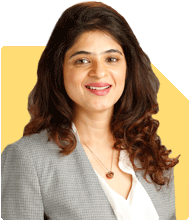Ramalingam Kalirajan |8459 Answers |Ask -Follow
Mutual Funds, Financial Planning Expert - Answered on May 31, 2024
He has an MBA in finance from the University of Madras and is a certified financial planner.
He is the director and chief financial planner at Holistic Investment, a Chennai-based firm that offers financial planning and wealth management advice.... more

Hi. I am 44 years old and my wife is 43. We have one son in class 8. Me and my wife both are teachers by profession. My salary is 50k and and my wife 40k. I give extra coaching to students to earn more. At present my family assets are- I have 9 lakhs in EPF, 17 lakhs in PPF in 13 years (will invest 17 more years), My wife also possess 6 lakhs in PPF in 5 years (will invest 17 more years), I have 20 lakhs in Pension Plan with 10 years deferment period, 33 laks in FD, 10 lakhs in KVP, 15 lakhs and 4 lakhs in PMVVY, 15 lakhs in SCSS, 7 lakhs in LIC Jeevan Akshay Plan, LIC insurance plan of 15000 Annually, Health Insurance of 10 lacs and extra top up for family, 5000 in NPS/ PM, investment in APY, SIP of 16000/ PM, My wife invests 7000 in NPS/ PM. I have a multi stored apartment to live, a scooty and a bike and a car. I have 16 years left and my wife has 17 years left to be 60 years. Plz suggest can we both safely retire at 60 with all these assets. Also keep in mind our future investments in the period left. Rupam Roy Tripura
Understanding Your Current Financial Position
Your current assets are diverse, reflecting a strong commitment to securing your future. Here is a breakdown of your assets:
9 lakhs in EPF
17 lakhs in PPF (you)
6 lakhs in PPF (wife)
20 lakhs in Pension Plan
33 lakhs in Fixed Deposits (FD)
10 lakhs in KVP
15 lakhs and 4 lakhs in PMVVY
15 lakhs in SCSS
7 lakhs in LIC Jeevan Akshay Plan
LIC insurance plan (Rs 15,000 annually)
Health Insurance (Rs 10 lakhs with extra top-up)
Rs 5,000 in NPS/PM
SIP of Rs 16,000/month
Wife’s SIP of Rs 7,000/month
Your Home and Vehicles
You own a multi-storied apartment, a scooty, a bike, and a car. These are important non-liquid assets.
Assessing Your Retirement Goals
Retirement planning involves evaluating your current assets, future income streams, and potential expenses. You aim to retire at 60, giving you 16-17 years to invest and grow your wealth.
Calculating Future Needs
Consider future expenses like your son's education and potential health care costs. Calculate how much you need for a comfortable retirement, factoring in inflation and lifestyle changes.
Optimizing Your Investments
Your current investment portfolio is diversified. However, optimizing certain aspects can enhance returns and reduce risks.
EPF and PPF
Your EPF and PPF are excellent long-term investments. They provide safety and steady returns. Continue maximizing your contributions.
Fixed Deposits and KVP
FDs and KVP offer security but relatively low returns. Diversifying some of these funds into higher-return investments might be beneficial.
Pension Plans
Your pension plans are critical for post-retirement income. Ensure they align with your retirement goals and adjust if necessary.
Health Insurance
Health insurance is crucial. Your coverage seems adequate, but review it periodically to ensure it meets your needs.
Evaluating LIC Jeevan Akshay Plan
LIC Jeevan Akshay Plan is a traditional insurance policy. While it offers guaranteed returns, it may not provide the best growth potential compared to other investments.
Disadvantages of LIC Jeevan Akshay Plan
Low returns compared to mutual funds
Lock-in period reducing liquidity
Limited flexibility in fund management
Benefits of Mutual Funds
Mutual funds, especially actively managed ones, can offer higher returns. They provide flexibility, diversification, and professional management.
Reinvesting in Mutual Funds
Consider surrendering your LIC Jeevan Akshay Plan and reinvesting in mutual funds. This can potentially enhance your returns and offer more flexibility.
Advantages of Mutual Funds
Higher potential returns
Professional management
Flexibility to switch between funds
Diversification across asset classes
Disadvantages of Direct Funds
Investing in direct mutual funds without guidance can be risky. A Certified Financial Planner can help navigate these risks and maximize returns.
Benefits of Investing Through a Certified Financial Planner
Expert advice on fund selection
Regular portfolio reviews
Adjustments based on market conditions
Continuing SIPs
Your current SIPs of Rs 16,000 and Rs 7,000 are excellent. Continue these to benefit from rupee cost averaging and compound interest.
Additional Investment Strategies
Consider diversifying further into equities and balanced funds. These can offer higher returns over the long term.
Equity Mutual Funds
Equity mutual funds can provide high returns by investing in stocks. They are suitable for long-term growth.
Balanced Funds
Balanced funds offer a mix of equity and debt, balancing risk and return. They provide stability and growth potential.
Monitoring and Reviewing Your Portfolio
Regularly review your portfolio to ensure it aligns with your goals. Adjust investments based on performance and changing needs.
Annual Reviews
Conduct annual reviews with your Certified Financial Planner. This ensures your investments are on track and adjustments are made timely.
Planning for Your Son’s Education
Allocate a portion of your investments specifically for your son's education. Education costs can be significant, and planning early ensures you are prepared.
Education Savings Plan
Consider an education savings plan. This can offer tax benefits and ensure funds are available when needed.
Managing Debt
Ensure you manage any debt effectively. Paying off high-interest debt early can save money in the long run.
Reducing Liabilities
Focus on reducing liabilities as you approach retirement. This ensures more of your income is available for living expenses.
Emergency Fund
Maintain an emergency fund to cover unexpected expenses. This provides financial security and peace of mind.
Ideal Emergency Fund Size
Aim for 6-12 months’ worth of expenses in your emergency fund. This ensures you are prepared for any financial surprises.
Conclusion
You and your wife are on a solid path to a comfortable retirement. By reassessing your LIC Jeevan Akshay Plan and considering reinvestment in mutual funds, you can optimize your portfolio for higher returns. Continue your disciplined savings and investment approach, and regularly review your portfolio with a Certified Financial Planner. This ensures your investments align with your goals and adapts to changing market conditions.
Best Regards,
K. Ramalingam, MBA, CFP,
Chief Financial Planner,
www.holisticinvestment.in
You may like to see similar questions and answers below
Ramalingam Kalirajan |8459 Answers |Ask -Follow
Mutual Funds, Financial Planning Expert - Answered on Jul 11, 2024
Milind Vadjikar |1236 Answers |Ask -Follow
Insurance, Stocks, MF, PF Expert - Answered on Nov 03, 2024
Ramalingam Kalirajan |8459 Answers |Ask -Follow
Mutual Funds, Financial Planning Expert - Answered on Dec 31, 2024
Dr Nagarajan J S K |406 Answers |Ask -Follow
NEET, Medical, Pharmacy Careers - Answered on May 16, 2025

Based on my understanding, no one usually requests a birth certificate at this age. Your inquiry relates to the period before and after independence. In those days, they would accept the SSLC book if you didn't have a birth certificate. However, I am not sure if that was the case during your time.
Instead, you can present your Aadhaar card, which likely includes your original date of birth. You can utilize that information.
If my response doesn't fully address your concerns, I recommend consulting a Notary Public for further assistance.
BEST WISHES.
THANK YOU SIR.
with regards
Prof Suvasish Mukhopadhyay |651 Answers |Ask -Follow
Career Counsellor - Answered on May 16, 2025
Prof Suvasish Mukhopadhyay |651 Answers |Ask -Follow
Career Counsellor - Answered on May 16, 2025
Radheshyam Zanwar |1634 Answers |Ask -Follow
MHT-CET, IIT-JEE, NEET-UG Expert - Answered on May 16, 2025
Radheshyam Zanwar |1634 Answers |Ask -Follow
MHT-CET, IIT-JEE, NEET-UG Expert - Answered on May 16, 2025
Ashwini Dasgupta |107 Answers |Ask -Follow
Personality Development Expert, Career Coach - Answered on May 16, 2025
Ramalingam Kalirajan |8459 Answers |Ask -Follow
Mutual Funds, Financial Planning Expert - Answered on May 16, 2025
Ramalingam Kalirajan |8459 Answers |Ask -Follow
Mutual Funds, Financial Planning Expert - Answered on May 16, 2025
Milind Vadjikar |1236 Answers |Ask -Follow
Insurance, Stocks, MF, PF Expert - Answered on May 16, 2025
Milind Vadjikar |1236 Answers |Ask -Follow
Insurance, Stocks, MF, PF Expert - Answered on May 16, 2025
























